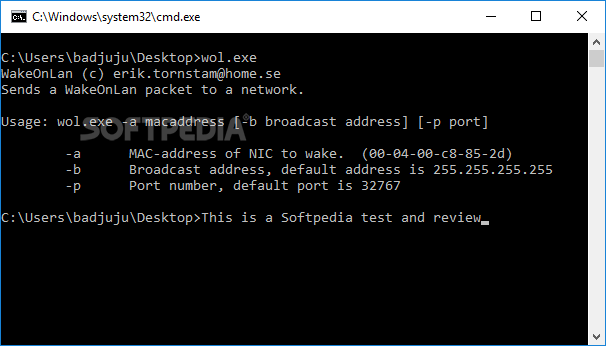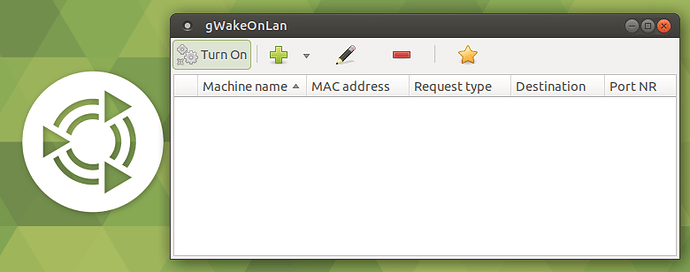

- Wakeonlan linux how to#
- Wakeonlan linux install#
- Wakeonlan linux windows 10#
- Wakeonlan linux software#
The interface we use here – a 10GB card- not only doesn’t come with WOL but the configuration is also not supported. We try to set it up like this # > ethtool -s p2p2 wol gĬannot set new wake-on-lan settings: Operation not supportedĭamn. In my case: # > ethtool p2p2 | grep Wake-on Run it on the interface, not on the VLAN (if any) that is active.
Wakeonlan linux how to#
On this post it is described how to know which Wake-on mode you interface has. Where’s the problem? The network interface should have WOL enabled. To run it on CentOS 7.X, type > ether-wake MAC-ADDRESS. Loading mirror speeds from cached hostfile Loaded plugins: fastestmirror, langpacks, nvidia
Wakeonlan linux install#
To be able to wake up a computer by delivering a so-called magic packet we would need to install a package called wol. Unfortunately they rely on a lot of services (like GPFS) so we don’t reccomend to switch them off.
Wakeonlan linux software#
Many motherboard manufacturers often implement software along with Wake-on-LAN capabilities to offer hassle-free or largely configuration-free usage scenarios.We have a lot of CentOS clients that are no always in use.

On a secure network, or for basic home use, there shouldn’t be any practical reason to worry. The above image shows the results of a packet sniffer tool used on magic packet, which brings into question exactly how secure they are when used in unsafe networks and over the internet. Magic packets are usually sent over the entirety of a network and contain the subnet information, network broadcast address, and the MAC address of the target computer’s network card, whether Ethernet or wireless. Because your computer is actively listening for a packet, some power is feeding your network card which will result in your laptop’s battery draining faster, so road warriors should take care to turn this off when you need to eke out some extra juice. The typical ports used for WoL magic packets are UDP 7 and 9. These magic packets are sent out by professional software made for any platform, but can also be sent by routers and internet-based websites. Wake-on-LAN-enabled computers essentially wait for a “magic packet” to arrive that includes the network card’s MAC address in it. Anyone who uses a program like VNC or TeamViewer, or keeps a file server or game server program available, should probably have the option enabled for the sake of convenience. This is useful if you plan to access your computer remotely for any reason: it allows you to retain access to your files and programs, while keeping the PC in a low-power state to save electricity (and of course, money).

The protocol also allows for a supplementary Wake-on-Wireless-LAN ability as well. The definition of “low power mode” has changed a bit over time, but we can take it to meanwhile the computer is “off” and has access to a power source. Wake-on-LAN (sometimes abbreviated WoL) is an industry-standard protocol for waking computers up from a very low power mode remotely.
Wakeonlan linux windows 10#
RELATED: How to Enable Wake-on-LAN in Windows 10 and 11 What Is Wake-on-LAN? Here’s how to enable Wake-on-LAN in Windows 11 and 10. Update, 11/18/21: Wake-on-LAN might be an old-school trick for turning on computers remotely, but it still works. Wake-on-LAN (WoL) has been around for a while, so let’s see how it works and how we can enable it. Technology often yields ridiculous conveniences, like being able to turn on your computer from miles away without pushing the power button.


 0 kommentar(er)
0 kommentar(er)
